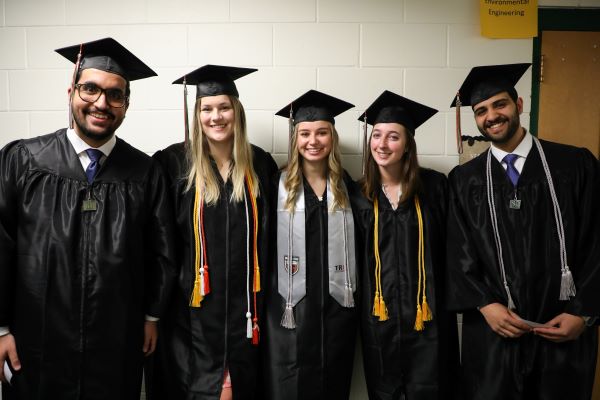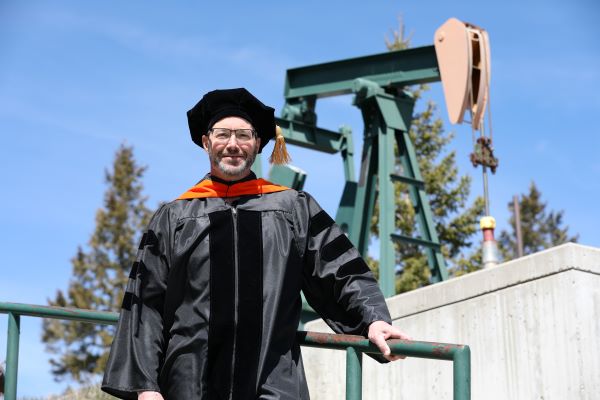Restoration graduate student’s work documenting pollinators has several useful applications
It’s noon on a June day at the Bluebird Trail, just west of Montana Tech’s campus, and restoration graduate student Nick Rasschaert is armed with a butterfly net, black light, notebook, and materials to refill his pit traps. At the surface level Rasschaert is counting pollinators to help prevent their worldwide decline, but if you dig a little deeper, multidisciplinary applications of his research come into focus, including combating world hunger and finding better restoration techniques for contaminated mining waste sites.
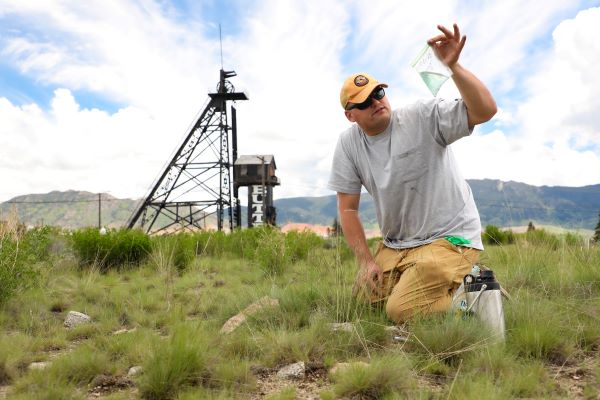
“All ant species can act as pollinators,” Rasschaert says as he checks a pit trap with a few ants at the bottom. “They are going to do a vast amount of pollinating just by walking from one plant to another. Beetles and ants are similarly essential as butterflies and bees for pollination.”
Rasschaert returns the pit trap bugs to the lab, where he sorts them by taxonomy and documents the species he found.
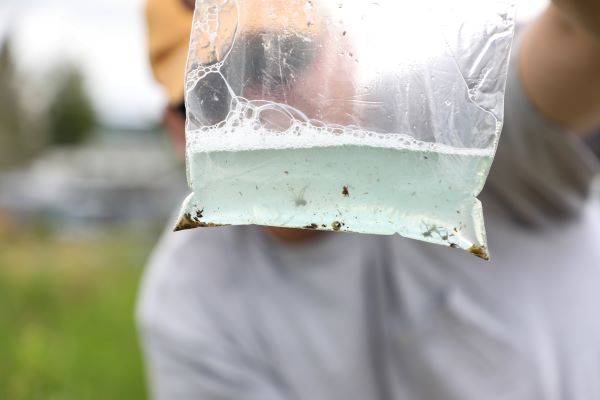
It was in the early 2000s when scientists first began to notice that the world’s pollinators were really in trouble. The United States Department of Agriculture estimates that wild bees declined 23 percent across the United States between 2008 and 2013. Scientists are finally seeing the impact of the loss of pollinators higher in the food chain, with Harvard researchers estimating in a 2023 study that 500,000 people a year are dying prematurely because the world’s supply of healthy foods has been reduced due to pollinator loss. Starchy foods like wheat, rice, corn, rye, oats and barley can be pollinated by wind, but many fruits and vegetables rely on pollinators to reproduce.
“Pollinators are at the foundation of the food chain,” Rasschaert notes.
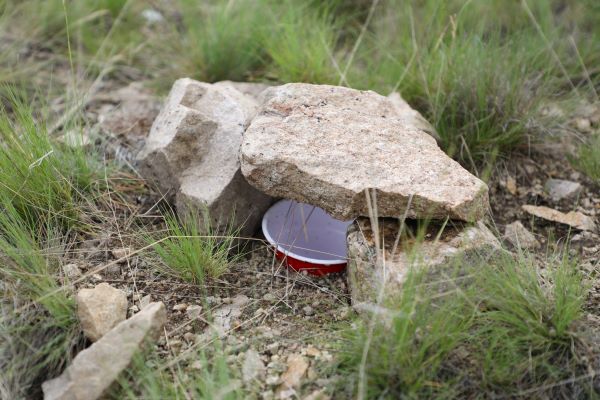
The plot Rasschaert checks near Bluebird Trail is a rehabilitated mining waste site. The area has been covered in several inches of lime and new topsoil that covers highly compacted orange and yellow mining waste. It was seeded with a native seed mix.
This area was restored several years ago, and some of the soil restoration has already failed, revealing the crusty mining waste below. Part of Rasschaert’s focus is to notice of which plants are thriving here so that more of them might be planted in the future to better hold the restored soil in place and serve local pollinator communities.
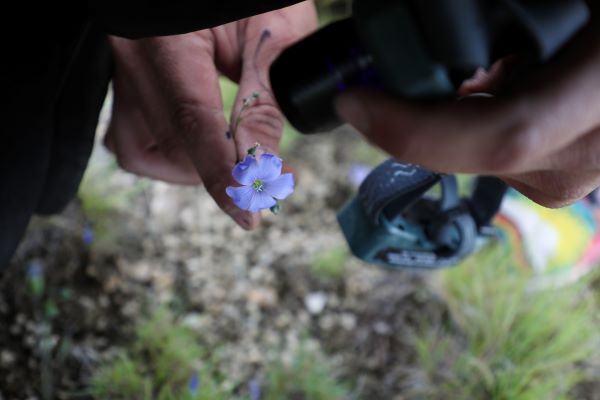
There are some invasive plant species that have a foothold in the area. After checking the pit traps, Rasschaert spends 10 minutes picking out individual native plants. He watches them for two minutes and tries to capture any pollinators on the plant at that time. While he’s waiting for a pollinator to stop by Rasschaert explains why native plants are important to native bees.
“These species have developed together for thousands of years,” Rasschaert says. “Native bees are specialists. They might be adapted to land and feed on one or two specific types of native plants.”
By comparison, non-native honeybees are generalists. They will visit every source of pollen they can.
“They out-compete everything else,” Rasschaert laments.
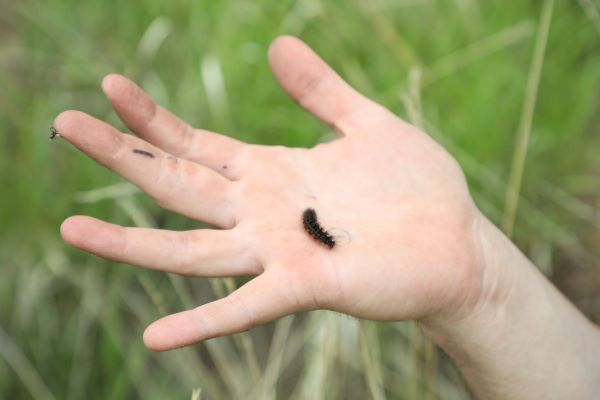
The next plot Rasschaert checks is the site of the Travona headframe, the iconic one that lets all passersby know they are in Butte because the town’s name is spelled out vertically at its base. The Travona was Butte’s first major mine. A claim was staked for gold mining at the site in 1864. Zinc, manganese, silver, and lead were mined from the site until its closing in 1954. There are several native plants that can be found at the site, where some restoration work has already been done.
Rasschaert pulls out a black light and crouches under a jacket to see if there are any ultraviolent patterns on the native flowers. Many flowers have invisible patterns to humans, formed by ultraviolent pigments that accumulate in the petals. The striking patterns help attract pollinators.
There are some pollinators here, but Rasschaert says it’s still not the most promising place for them to live.
Rasschaert stops at a field along “Scrap-H” road at the third site of the day.
“This is exactly what a native restoration site should look like,” Rasschaert said.

A restoration team has tried three different types of techniques here. The field looks lovely, with a nice mix of native species designed by Dr. Robert Pal. A caterpillar is seen crawling up a stem. A butterfly flicks around a flower.
The home next to the restored field has a large lawn where every visible inch is covered with seeding dandelions, a sea of white.
“The native plants are so well established here, the hope is that they can keep the weedy dandelions out,” Rasschaert said.
The last stop of the day is the Bell Diamond Headframe. The site is locked to the public. Despite receiving a new daily record of 1.82 inches of rain a couple days prior, the ground here is compacted and there’s no sign any of that water has infiltrated or percolated into the soil. It’s hard, bright yellow and sparkles in some places, as the sun catches huge chunks of iron pyrite, or fool’s gold. There are discolored pools of water in a couple of places, and Rasschaert says that is because of heavy metals and incredible acidity.
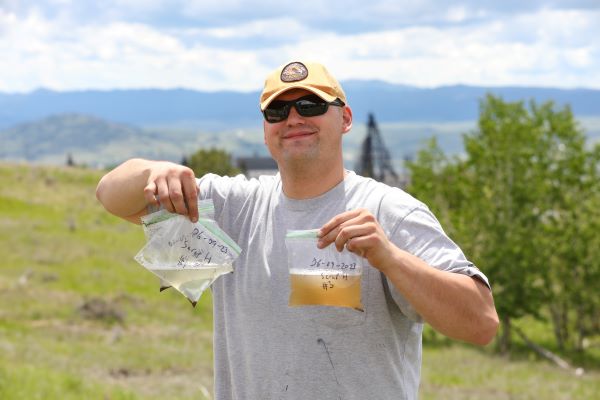
“This is our worst-case scenario. It’s been this way for more than 100 years.” Rasschaert says. “If you were a bee, would you want to live in toxic soil?”
A significant number of solitary pollinators don’t live in trees or in hives. They bore into the ground to make a home.
The site is mostly barren of plant life, save a few scraggly patches of grasses struggling to adapt and it overlooks Berkley Pit, part of the largest Superfund site in the U.S. It’s a toxic, barren dead zone for hundreds of acres in every direction.
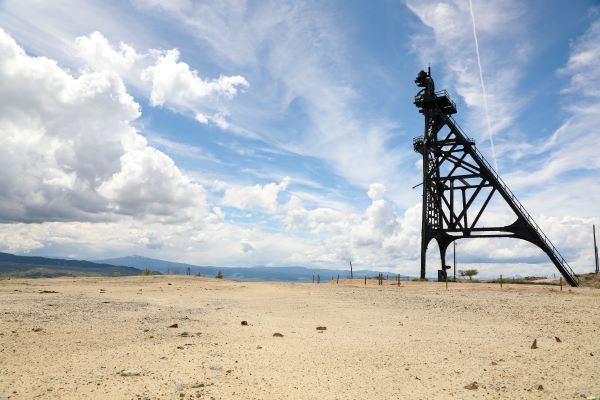
“How can we take an ecosystem that’s inhospitable and make it self-sustaining?” Rasschaert asks.
Rasschaert, a native to Michigan, is about to enter the second half of the master’s program, and he hopes another student will take over the pollinator project. This is Rasschaert’s second master’s degree. He previously earned a master’s degree in museum studies. He’s worked as a tour guide and park ranger. He believes restoration is a field that offers additional opportunities to work in different aspects of conservation.
“This work is always going to be important, and will always matter,” Rasschaert said.
Dr. Robert Pal, one of Rasschaert's advisors, along with Dr. Martha Apple, expressed that Nicholas's project has gained international traction. Dr. Julia Osterman, a pollinator scientist from the University of Gothenburg in Sweden, joined the research after meeting Dr. Pal at the G20 Summit in India. It is anticipated that Dr. Osterman will also serve as Nicholas's external committee member.


